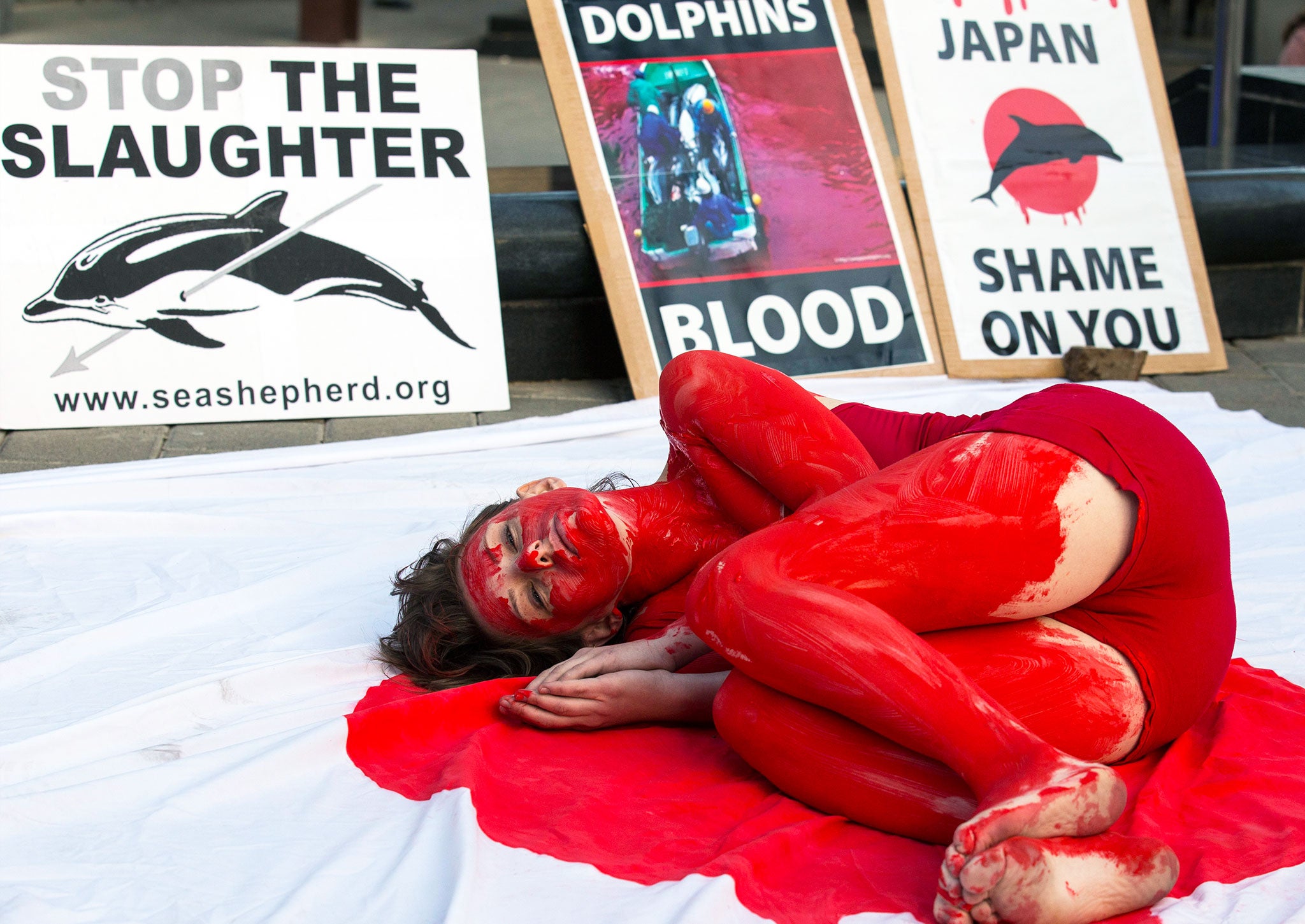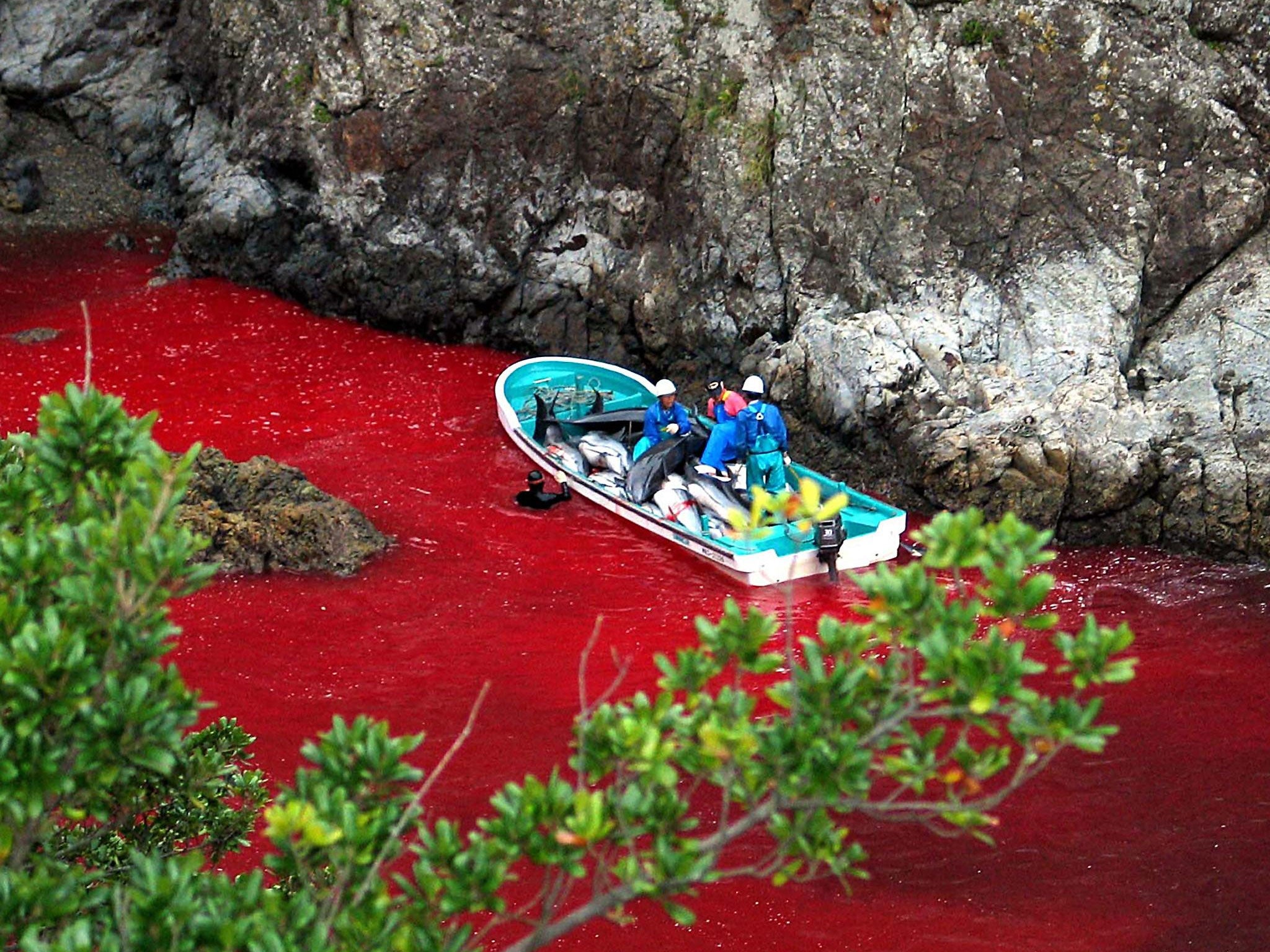Nature Studies: We must protest against the outrageous cruelty of Japan's dolphin slaughter
The dolphin hunts at Taiji Cove are as revolting a spectacle as it is possible to imagine

A few months ago, I wrote about the sad phenomenon of the dolphinarium, the aquarium that houses performing dolphins – a zoological craze which swept the world at the end of the 1960s after the immense success of the US TV series Flipper (the story of a fictional bottlenose dolphin which was the pet of a marine park ranger in Florida).
By 1972, in Britain alone there were 36 of them, delighting audiences at the expense of the misery of the animals themselves, which in the wild might swim 100 miles a day, but were now confined for life to tanks a few metres across. I saw one myself in what was then Windsor Safari Park, huddled at the bottom of its narrow concrete pen, the most obviously depressed animal I had ever seen, and I was convinced from that moment that keeping dolphins in captivity was wholly wrong.
Well, in the UK, thank God, dolphinariums faded away – the last British one closed its doors in 1993. But there are still more than 2,000 dolphins held in captive facilities around the world, and the main supplier of these animals is a small port in south-west Japan called Taiji, where for six months of each year, from September to February, a group of about 50 fishermen organise hunting “drives”, which herd schools of wild dolphins towards the coast, where they are netted.
There, some animals are selected for sale to dolphinariums across the world for $150,000 (£99,000) each, which is wretched enough; but what happens to the remainder, the vast majority, hundreds and hundreds of them, is much worse. Driven into a small, secluded cove, they are slaughtered for their meat by being stabbed repeatedly with spears as they struggle in the nets holding them, until the cove itself runs bright red with their blood.
It is immensely, egregiously cruel, and the fishermen who do it had carefully kept it secret for many years. But it was brilliantly – and heartbreakingly – exposed in 2009 by a team of American environmentalists who, in a cloak-and-dagger operation of great ingenuity and daring, captured it all on hidden cameras. The resulting film, entitled The Cove, was so powerful and moving that it won the Oscar for Best Documentary in 2010, and the barbaric cruelty involved was broadcast around the world.

You might think the Japanese government would be embarrassed, and might even act to outlaw these activities – but not a bit of it. The Taiji dolphin hunt and the Taiji dolphin slaughter continue vigorously to this day, the only difference being that the fishermen carrying it out have erected tarpaulins across the cove to make the killing harder to film – as I was vividly reminded last week when a tweet dropped into my timeline which took me aback.
It was from the Cove Guardians Twitter account and it said: “Entire dolphin family being slaughtered right now in the killing cove. #tweet4taiji 9:48am.” The “Cove Guardians” who sent it are members of the Sea Shepherd Conservation Society, environmental activists who are monitoring and live-streaming what happens at Taiji.
In recent years we have become ever more aware of how intelligent and special dolphins are, not just through some exceptional encounters with people, but by the proliferation of scientific research which has shown, for example, that they have “signature whistles” in their communications – in effect, personal names – raising the possibility that they may have consciousness. They clearly have close and intense social groups, and I think that was why I found the tweet about a complete family being slaughtered so disturbing; although everything about the business is disturbing.
The slaughter of dolphins at Taiji is as foul and heartless and revolting a spectacle as it is possible to imagine. So you might like to know that there is a mass protest against it planned for this coming Saturday – 17 January – in central London, organised by pressure group London Against the Dolphin Massacre, supported by wildlife charity Care for the Wild – a lunchtime march from Cavendish Square to Trafalgar Square.
Care for the Wild’s Dominic Dyer said that the fishermen’s defence that the drives are “cultural” was not valid: “Turning the sea blood red and leaving dolphins to drown amongst their pod is not culture, it’s cruelty,” he said. “Plucking the cutest dolphins out of the pod and selling them for $150,000 is not culture, it’s capitalism.”
Tempted to join the march? If you want to see for yourself the horrific reality of what is still happening at Taiji you can do, with a click of a mouse – for The Cove in its entirety is on YouTube.
It is an hour and a half of one of the most gripping stories you will ever see, and a shaming indictment of Japan for not ending the barbaric practices of a small number of its fishermen, which have no place in a civilised world.

Join our commenting forum
Join thought-provoking conversations, follow other Independent readers and see their replies